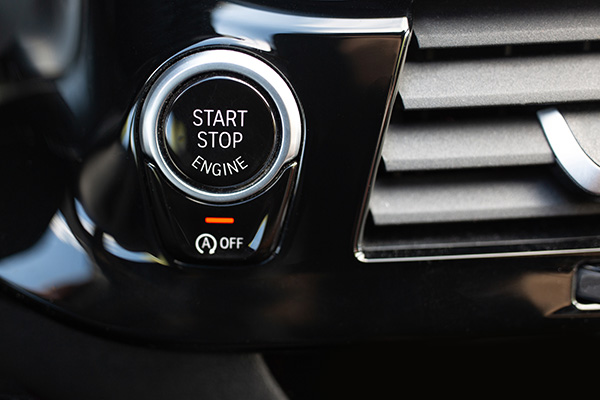
In today’s world of fuel efficiency and environmental awareness, modern vehicles are equipped with features designed to conserve energy and reduce emissions. One such feature is the engine start-stop system, a technology that has become increasingly common in vehicles across the globe. But how exactly does this system work, and why is it important for drivers?
The Purpose of an Engine Start-Stop System
At its core, the start-stop system aims to minimize fuel consumption and reduce harmful emissions by turning off the engine when the car is idle. Whether you're waiting at a traffic light or stuck in gridlock, this technology ensures that your engine isn’t unnecessarily burning fuel during moments of inactivity. When it's time to move again, the system seamlessly restarts the engine, allowing for a smooth transition back into motion.
This small adjustment in how your vehicle operates can lead to noticeable savings at the pump, making it an attractive feature for eco-conscious and budget-minded drivers alike.
What Triggers the Start-Stop System
The start-stop system relies on a network of sensors and control units to determine when it’s safe and efficient to turn off the engine. Here's what typically happens:
- Idle Detection: The system recognizes when the car is stationary, such as at a red light or in a traffic jam.
- Brake Activation: In most vehicles, the engine will shut off once the driver applies the brake and the car comes to a complete stop.
- Restart Conditions: When the driver lifts their foot off the brake or presses the accelerator, the system automatically restarts the engine.
Advanced start-stop systems are smart enough to account for specific conditions, ensuring they don’t engage when it’s inappropriate. For example, the system might stay inactive if the battery charge is low, the engine temperature isn’t optimal, or the air conditioning is in heavy use.
How Does It Restart the Engine So Quickly
One of the key components of the start-stop system is the enhanced starter motor or integrated starter-generator. Traditional starters weren’t designed for frequent use, but modern systems incorporate durable and faster starters that can handle the repeated engagement required by start-stop technology.
Some vehicles use a belt-driven starter generator, which allows for an even faster and quieter restart. These systems are designed to ensure that the process is virtually seamless for the driver and passengers, minimizing any noticeable delay when accelerating from a stop.
The Benefits of Using Start-Stop Technology
The advantages of an engine start-stop system go beyond saving fuel. Here’s how this innovation benefits drivers and the environment:
- Reduced Fuel Consumption: By turning off the engine during idle periods, the system can significantly cut down on fuel usage, especially for drivers who frequently navigate city traffic.
- Lower Emissions: Start-stop systems help reduce greenhouse gas emissions, making your vehicle more eco-friendly.
- Cost Savings: Over time, the reduction in fuel usage translates to cost savings for drivers, offsetting the initial investment in the technology.
- Quieter Operation: Turning off the engine during stops can result in a quieter cabin environment, particularly in heavy traffic.
Common Concerns About Start-Stop Systems
While the benefits are clear, many drivers have questions or concerns about the technology. For example, some worry that frequent starts and stops might wear out the starter motor or put additional strain on the battery. Manufacturers address these concerns by equipping vehicles with advanced components, including:
- Heavy-Duty Starters: Designed to withstand frequent usage.
- Enhanced Batteries: Many systems use advanced batteries like AGM (Absorbent Glass Mat) that can handle the increased demands.
- Smart Management Systems: These ensure that the system only operates when conditions are optimal, preserving the longevity of the vehicle’s components.
When Does the System Not Engage?
As smart as start-stop systems are, there are instances when the technology will not activate. These include:
- Extreme weather conditions, such as very cold or hot temperatures.
- When the battery’s charge level is too low.
- During heavy air conditioning or heating use.
- When the engine hasn’t reached its optimal operating temperature.
By monitoring these factors, the system prioritizes reliability and driver comfort over fuel savings.
Does the Start-Stop System Require Maintenance
Just like any other vehicle system, regular maintenance is essential to keep the start-stop technology functioning properly. This includes:
Battery Maintenance
Start-stop systems demand more from the battery, so it’s crucial to ensure it remains in good condition. Regular inspections can help you avoid surprises.
Starter Motor Care
While these components are built to last, a thorough inspection during routine service ensures they’re operating effectively.
If you experience any issues, such as delayed restarts or inconsistent operation, it’s a good idea to have your vehicle inspected by a professional.
Your start-stop system works hard to save you fuel and money—don’t let it fall behind on maintenance. Visit DRIVE AutoCare in Solana Beach, CA, for a comprehensive inspection and expert advice. Book your appointment now and keep your vehicle at its best!